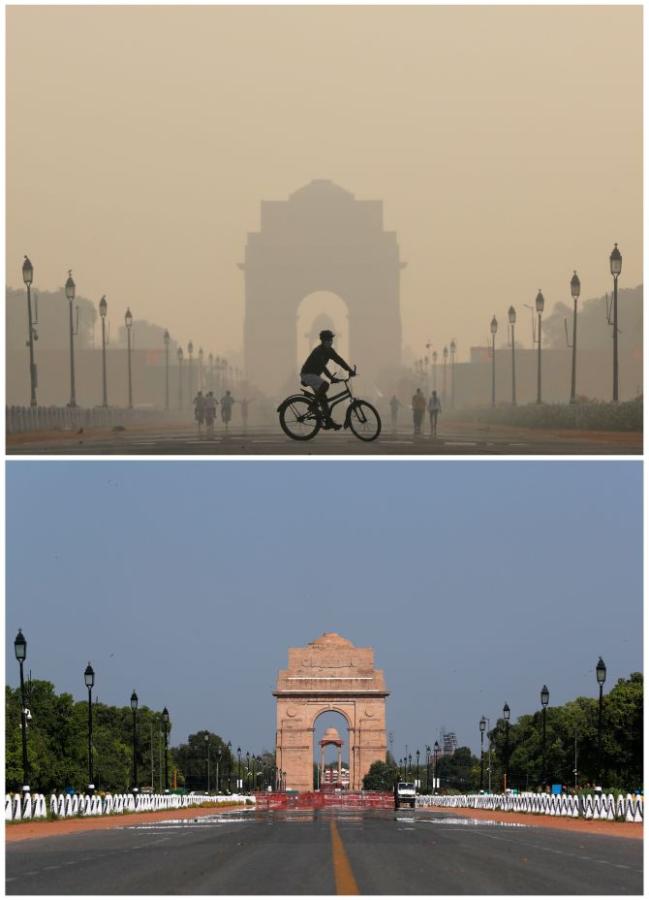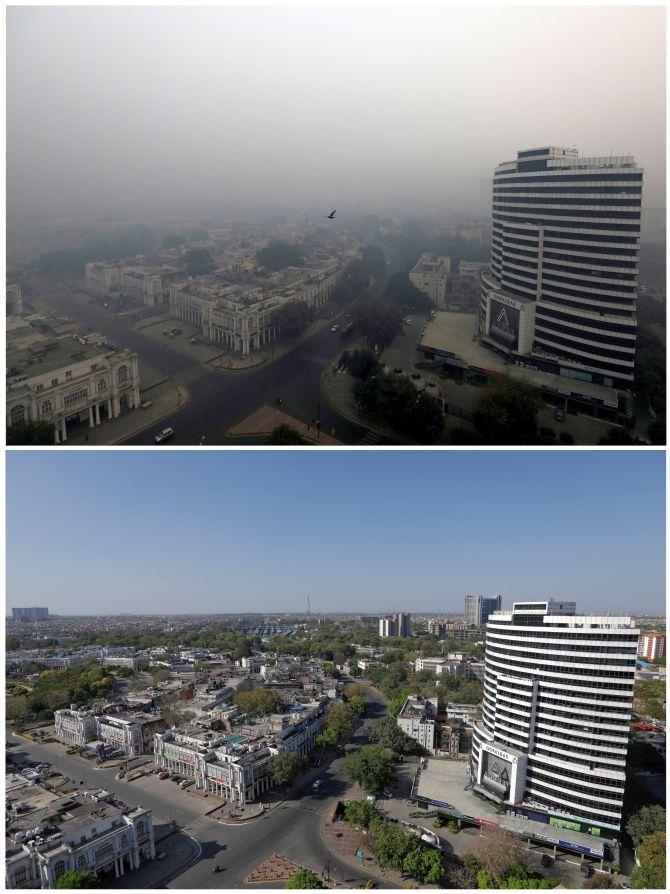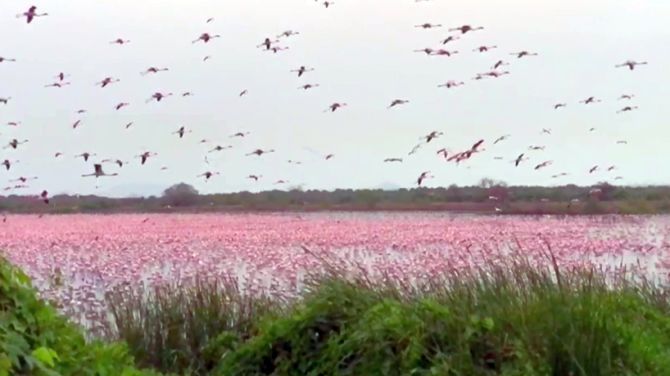As India shut down and suspended all transport to contain the spread of coronavirus, the skies over its polluted cities quickly turned an azure blue, and the air, unusually fresh.
As air pollution plummeted to levels unseen in living memory, people shared pictures of spotless skies and even Himalayan peaks from cities where the view had been obscured by fog for decades.
Less than six months ago, Delhi was gasping for breath. Authorities said air quality had reached "unbearable levels". Schools were shut, flights were diverted, and people were asked to wear masks, avoid polluted areas and keep doors and windows closed.
But during the lockdown that began on Mar 22, the concentration of poisonous PM2.5 particles in a cubic metre of air averaged at 44.18, according to a Reuters analysis of government data, indicating a rare "good" rating, the safest level on the scale.
That is sharply down from an average concentration of 81.88, recorded between March 22 and April 15 of 2019, according to the analysis of data gathered by the state-run Central Pollution Control Board.
Similar reductions have been seen in Mumbai, Pune and Ahmedabad.

A combo shows the India Gate war memorial on October 17, 2019 and on April 8, 2020. Since the lockdown was imposed, the air quality all around the country has shown a drastic improvement due to the eradication of local pollutants generated due to construction activities and vehicular traffic among others.
Photograph: / Rediff.com
A combo shows buildings on November 8, 2018 and after the lockdown was imposed in New Delhi. Urban Emissions has found the levels of PM 2.5 in Delhi during the lockdown has plummeted to 20 micrograms per cubic metre with a 20-day average of 35. To put this into context, between 2017 and 2019, the monthly average of PM 2.5 in the capital was up to four times higher. Photograph: Anushree Fadnavis, Adnan Abidi/Reuters

A combo shows a boat on the banks of the river Yamuna on March 21, 2018 and after air pollution levels started to drop during the nationwide lockdown to slow the spreading of coronavirus disease in New Delhi. The Delhi Pollution Control Committee in a report stated that Yamuna's Biological Oxygen Demand levels have improved by up to 33 per cent. DPCC attributed the improvement to more water being released into the river and reduced industrial activity. The amount of toxic waste being dumped into it has also greatly decreased, said vice-chairman of Delhi Jal Board Raghav Chadha. Photograph: Adnan Abidi/Reuters

A large number of migratory Flamingos have flocked during coronavirus lockdown in Navi Mumbai creek. The Bombay Natural History Society said there has been a 25 per cent increase in flamingo migration since 2019, when 1.2 lakh birds had come visiting. This year, over 1.5 lakh birds were spotted in the first week of April itself. The society attributed this increase to lower human activity in areas such as Sewri, Thane Creek and the Talawe wetlands, comprising the NRI Complex, Seawoods and TS Chanakya in Navi Mumbai. These areas would normally see a lot of construction work and human activity but the nationwide lockdown has created ideal conditions for the flamingoes to forage in the wetlands around these places. Photograph: ANI Photo














